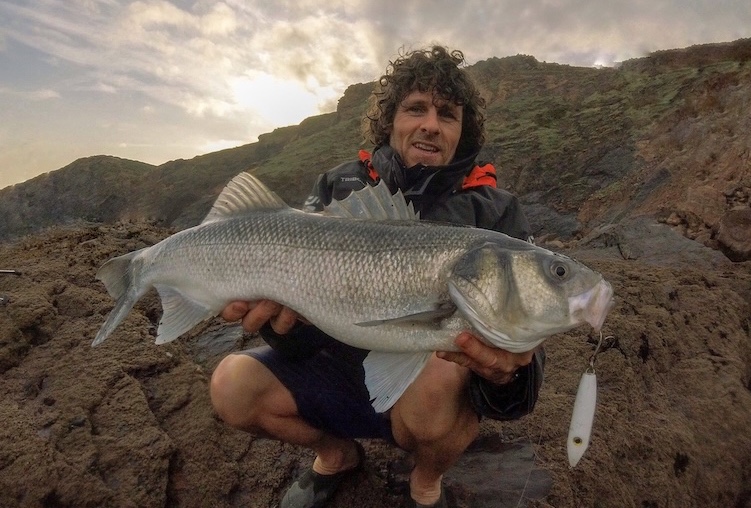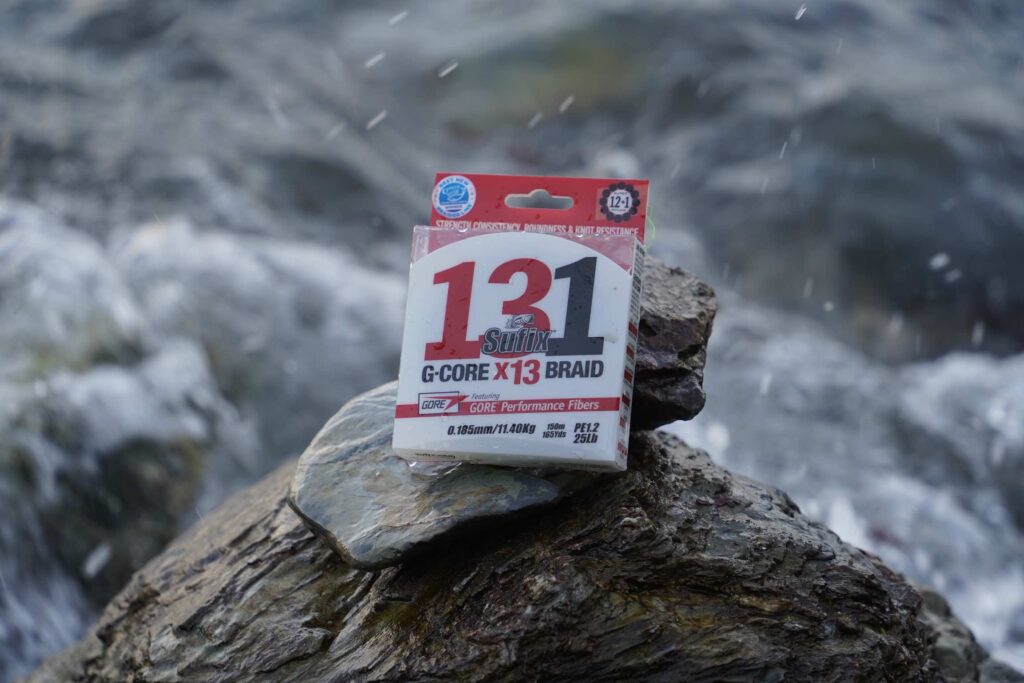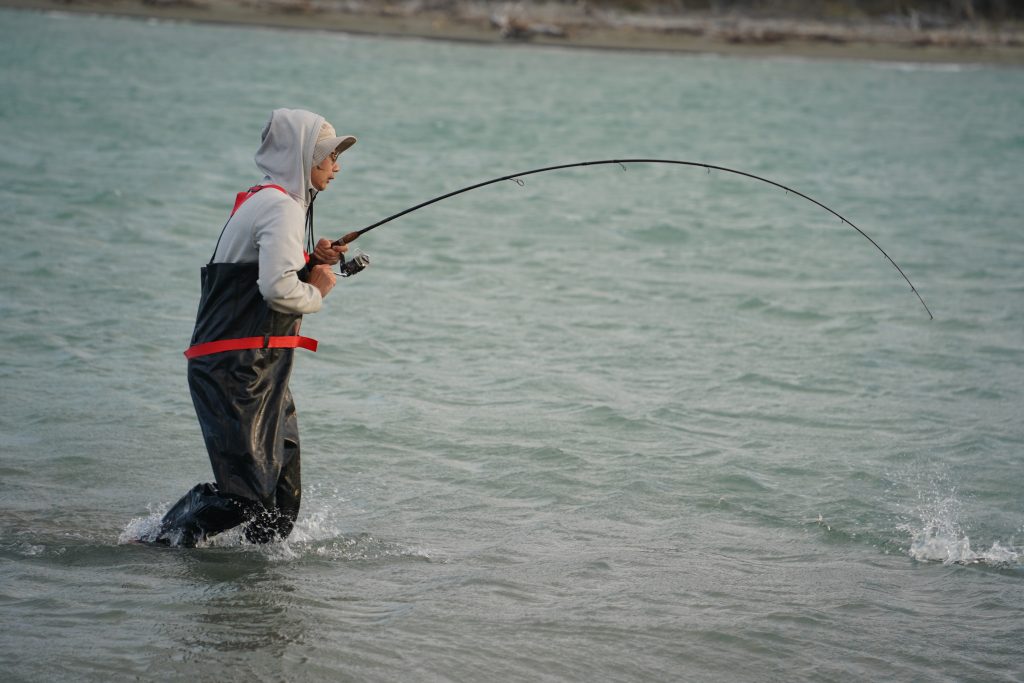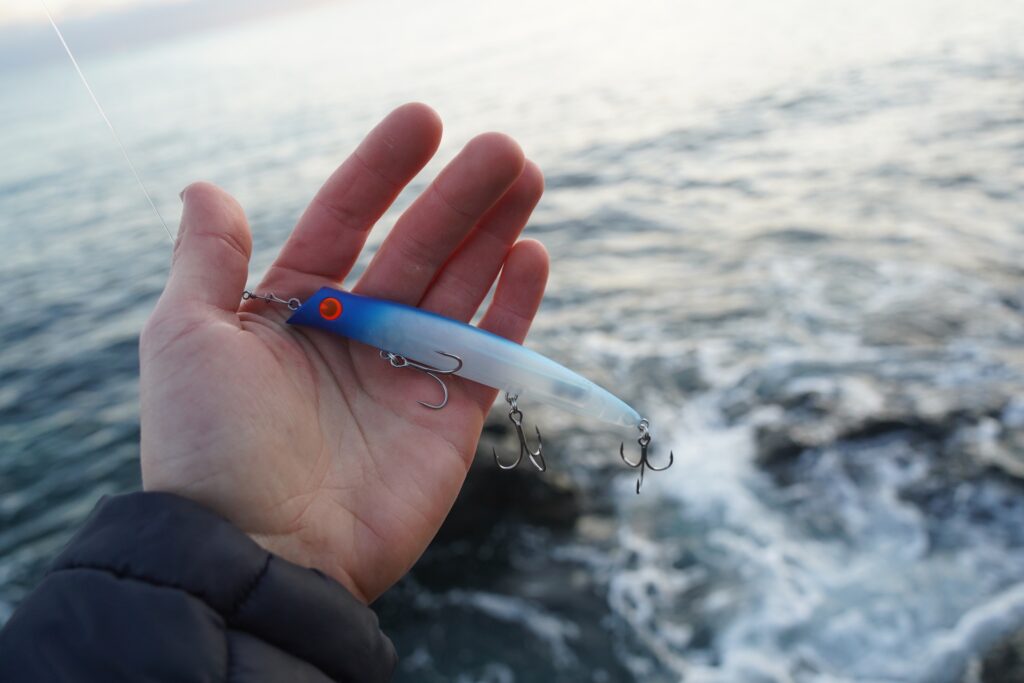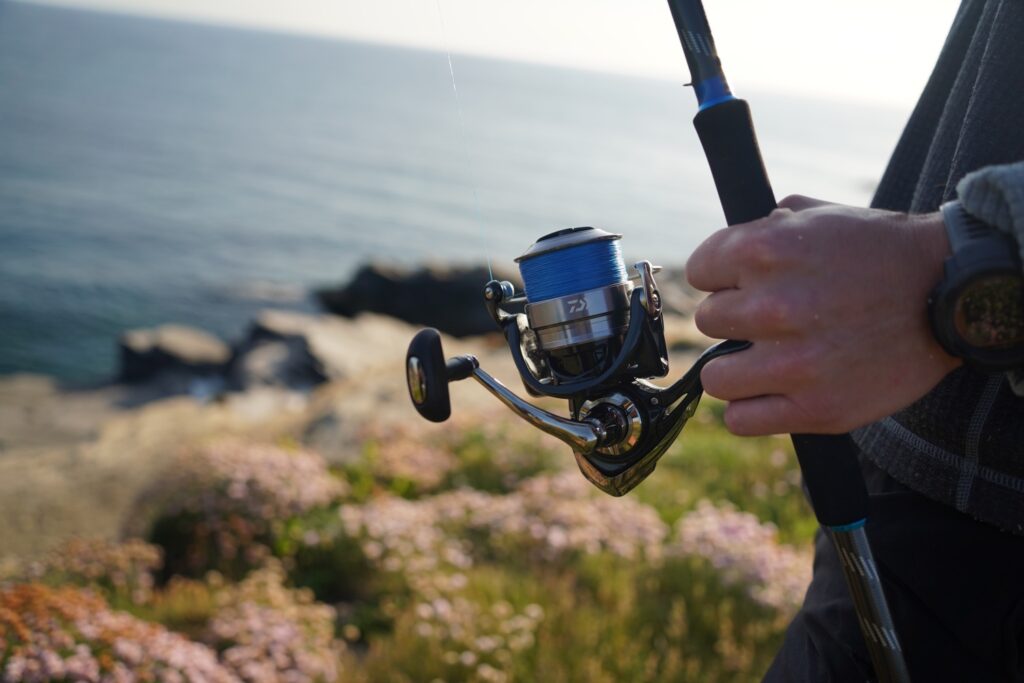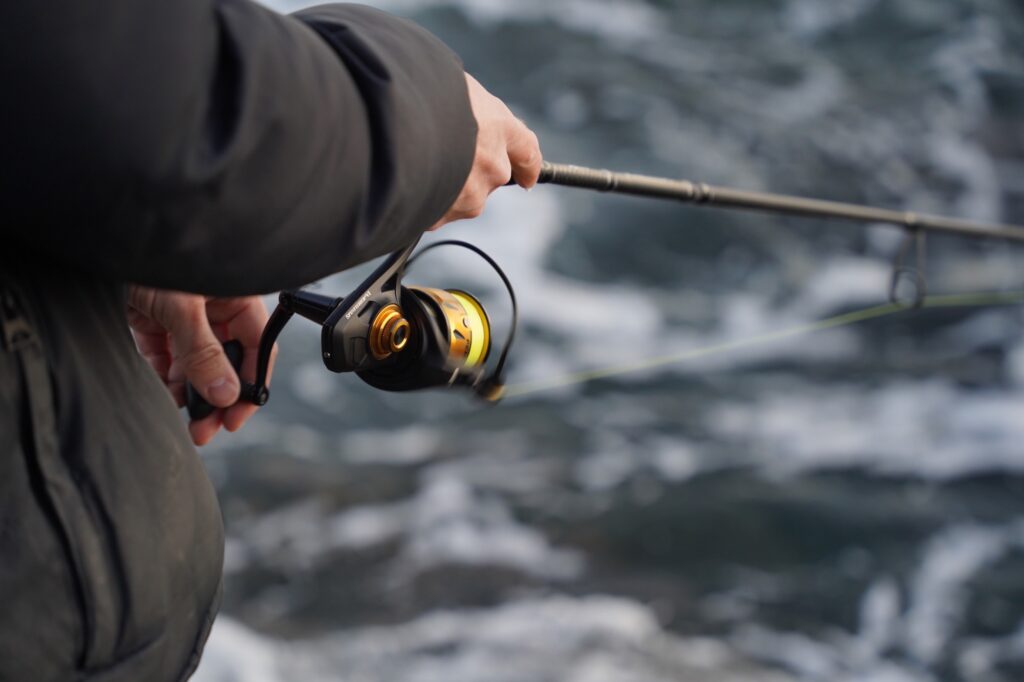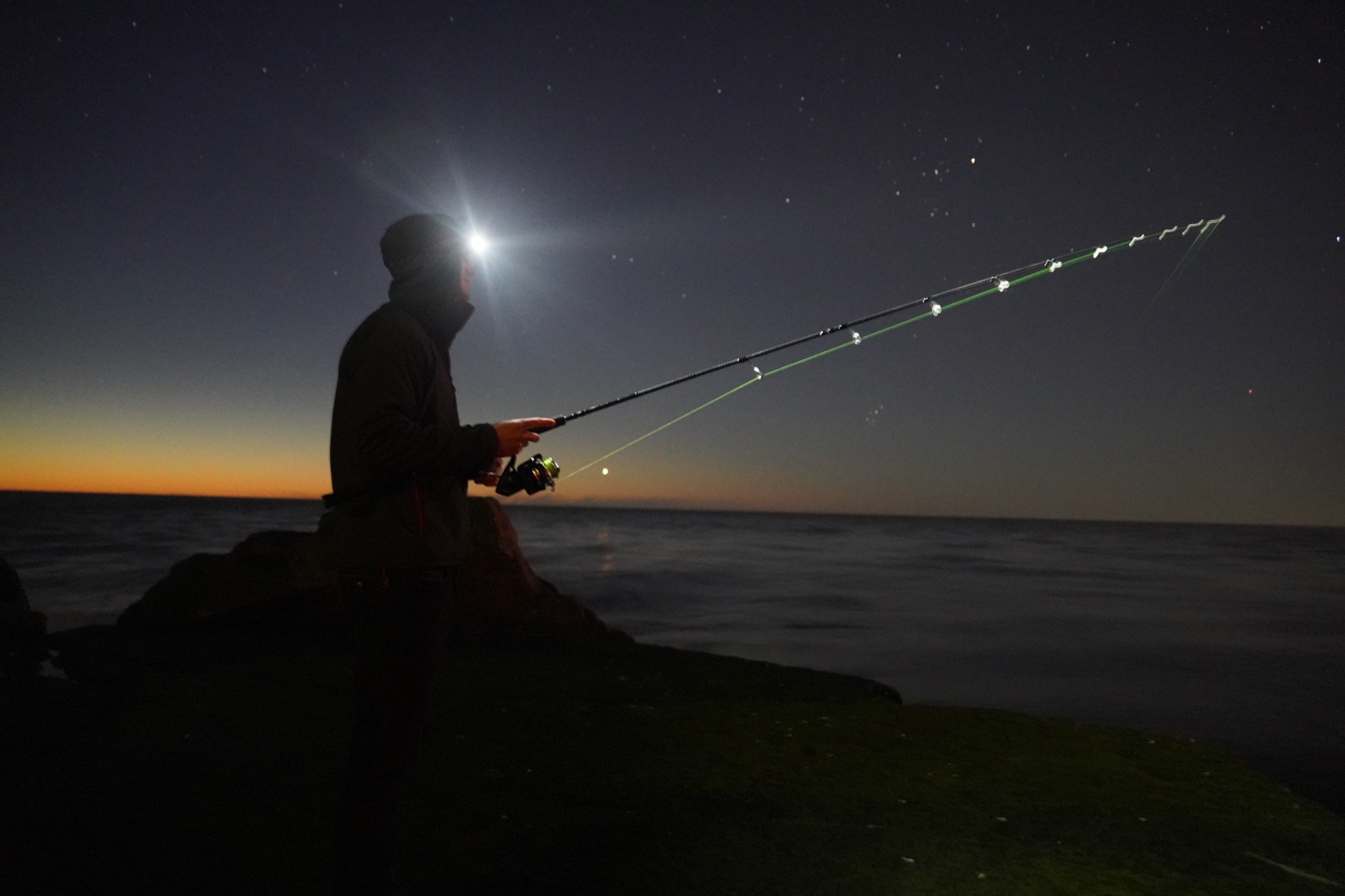
Squid Fishing UK |11 tips for jigging at midnight
Jigging for squid is very different from other fishing methods. Most of the takes come as the lure is falling, rather than being retrieved. The lures used have no hooks. Squid are present much more often than many realise, and when they are present they aren’t too hard to catch. There are specific jigs that can perform better than others, but when the squid are feeding aggressively they are not overly selective.
FISHMAG is an Amazon Affiliate and may earn commission from sales.
Squid fishing may become much more popular, as the squid population rises in response to the overfishing of their natural predators. But the squid are ferocious predators themselves, hunting in ‘squads’, chasing baitfish and pulling them into their terrible beaks.
#11 Use a light weight modern lure rod and good braid
FISHMAG recommend specific rods, reels and lines that work well together in a lure fishing set up here.
Targeting squid is best done with a light spinning rod outfit, which is pretty much the same as a bass rod in terms of casting weight. You could also use a lightweight boat rod if you’re fishing offshore.
When you’re working squid jigs, the rod action is typically a sharp upward movement. If your rod has a slow action and bends more towards the base of the rod or even the mid-section, this can make it hard to detect squid bites. It also doesn’t feel that great when your rod leans into the squid jig that heavily. This is the favoured rod action for squid fishing in Japan.
Instead, the perfect set up is basically a bass rod with a fast action, so you have the sensitivity in the tip to detect bites while having a rod that recovers its shape quickly. This results in a rod that feels relatively stiff, even at lower casting weight ranges. If you’re shopping online and looking at higher end rods, the ones that mention being good for casting jigs are likely to be a great choice.
High end options
The Major Craft Triple Cross 9ft 4′ casting up to 40g is a grunty set up for blasting squid jigs out. Pair with a 4000 size reel from Penn or Daiwa. The shorter, lighter triple-cross would also be a great high-end choice with a 3000 size reel from Daiwa or Shimano or a 2500 size from Penn due to the lightness of the Japanese blank.
Lower cost option
Check out the Sunset Squid rods for a lower cost specialist squid rod, or these. Pair with a 3000 size reel from Penn, Daiwa or Shimano in this 8′ version. The Catana 3000 looks like it was designed to go on it, and also happens to be the perfect size.
Then, since many of these jigs are only around 21g, you will need high-end braid to cast and work them effectively. The braid will float on the surface, then plumb down to your squid jig and give you a direct connection. If you use mono or fluoro, your line will sink and when you jerk your rod up, you’ll be lifting up more slack line.
One piece of kit you really won’t want is a white T-shirt, unless you want a new ink-spray design!
In short, the best rod for squid fishing is essentially the same as a fast action bass rod.
#10 Not all squid jigs are equally effective
The squid come to harbours and feed on the small fish taking refuge right up against the walls. Squid jigs are designed to fall slowly because squid have a habit of striking falling lures. It’s even more pronounced behaviour than it is in bass, which do the same thing. For this reason, jigging is the best method. It also conveniently covers the full range of the water column, which is good because squid feed throughout the water not at a set depth.
Simply cast out a squid jig, count to ten, then sharply lift up your rod or reel back in, before letting the jig sink back down again. Repeat this the whole way in. The best squid jigs apparently do out perform the cheaper ones. A guy told me he was once fishing in Egypt for calamari and he tried out two different squid jigs. He says they didn’t respond to the cheaper ones. I have caught squid on the cheaper ones and believe that the size of the jig is often more important. That said, it’s hard to lose squid jigs to snags so investing a bit more isn’t a bad shot.
Yamashita, DTD and Yo zuri are good options. Cheap ones from amazon are useful if you’re already catching and don’t feel the need to risk fancier products over rough ground.
High end squid jig, genuinely better (if out of stock, anything from Yamashita, incl. these)
Low cost squid jig, can also work fine

#9 The best time to catch squid is night time
Fishing is best late at night. When the stars and moon are out this is the most peaceful time to be by the water.
#8 Find or bring a light source
You preferably want a decent head torch for standing on harbours on autumn and winter nights after dark. The later the better (1am great, but anytime from dusk onwards they could move in). Find areas with lights on the water. You will often see the squid lingering under these lights. They are ritualistic creatures and will pass through an area as part of a systematic hunt. If you’re in a likely spot you have to put the time in to wait for them to move through.
Commercial squid boats point lights into the water to draw these fish in. This part is important.
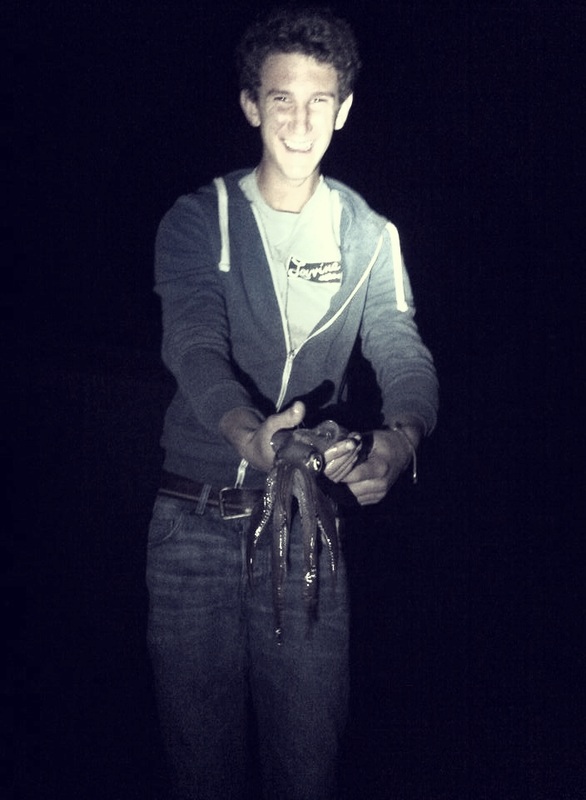
#7 Squid jigging is very different from a straight retrieve
The two mistakes to watch out for are casting and reeling straight back in in a straight line. That’s not what squid are about. For some reason they love to hit falling lures. Squid jigs fall slowly, and squid can move very fast. They normally take the lure when your line is a little slack. This may be why the fancier squid jigs work better – they may glide and fall in a more natural way. The Japanese designers take these details seriously.
This makes more sense when you think of how a squid feeds. It spots a small pollack or pouting, shoots out two long tentacles, which are the longest two in their arsenal. Then, they quickly grab the fish and pull it into their eight arms. This forms an almost inescapable rubbery suction grip around the fish. If you have a tight line and reel in when the squid only has a two-arm grip, you may not land the squid. If the lure was falling, the squid would have time to grab the lure with more legs and you’d get a better hook up.
In the centre of the squid between the legs and tentacles, is a beak-like mouth. It looks and feels exactly like that of a parrot. Squid feeds by biting lots of small chunks out of their prey once they’ve grabbed them. Poor little pollack start their day as happy fish cruising the kelp and end up looking like catfood stuffed inside a white condom. These mouths can cut through the cork on the handle of a fishing rod (I’ve seen it) and a bigger one could do much worse…
#6 Bring a landing net or drop net
Not using a landing net is another mistake. Without one, you will lose about 50% of squid. This is due to poor hook holds when lifting them up the harbour wall. Seeing that last tentacle let go and watching the squid bolt away is frustrating.
Drop net, also useful for general pier fishing
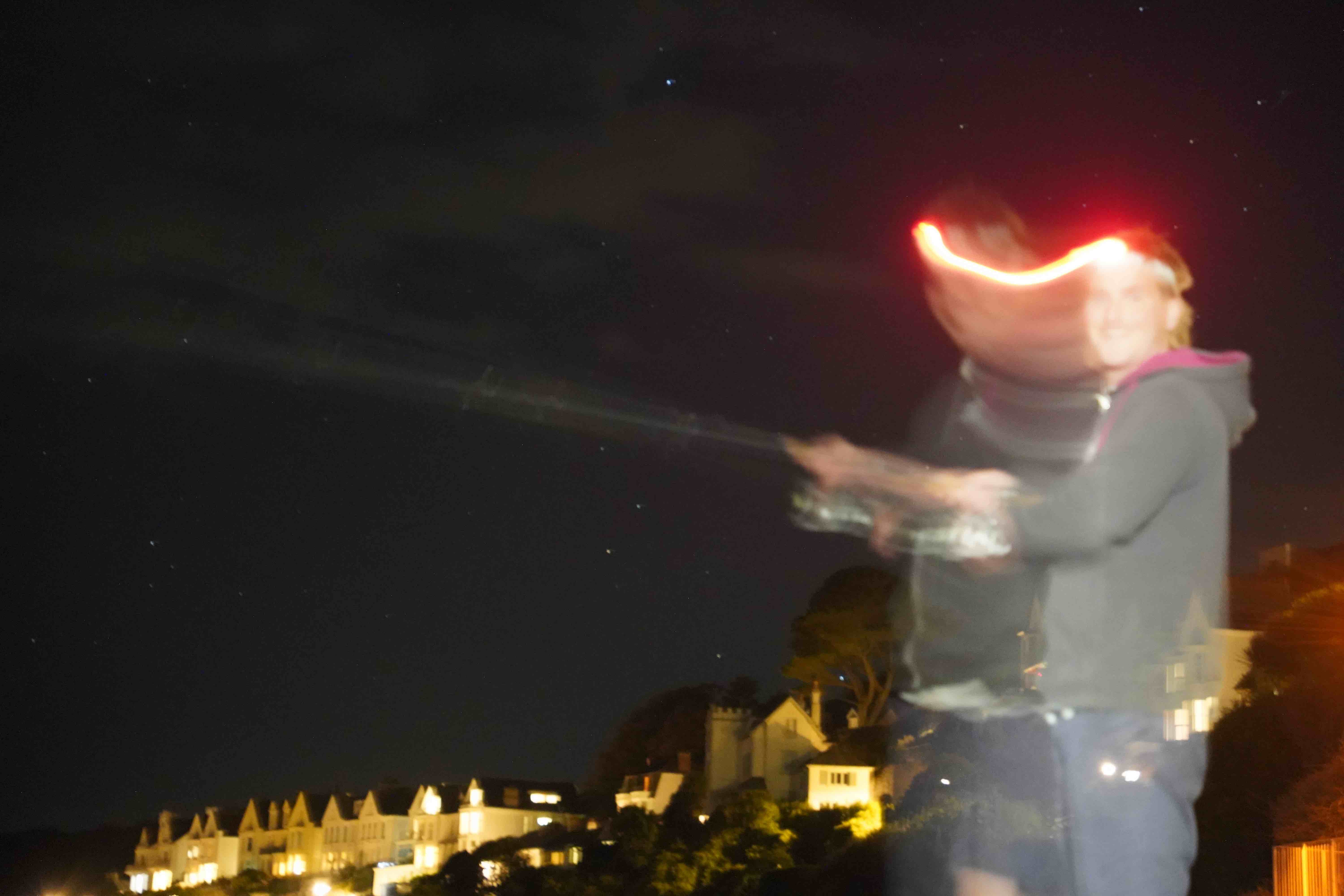
#5 Not catching fish? It could be a sign of squid
When the squid arrive in an area, fish catching will cease. Small pollack and pouting cling even closer to the kelp. Wrasse retreat into hidden crevices. The bass disappear, aware that a more formidable predator has arrived. Squid, far more intelligent than fish, often arrive in large ‘squads’. These squads are quite intimidating to other life forms. These creatures cannot outpace the lightning-fast jet-propulsion of the squid.
Another strategy is simply to always have a few squid jigs with you, just in case they show up. If you hook a squid and lose it on regular lures, you can whack out your squid jig on whatever rod you have with you and be in for a good chance.
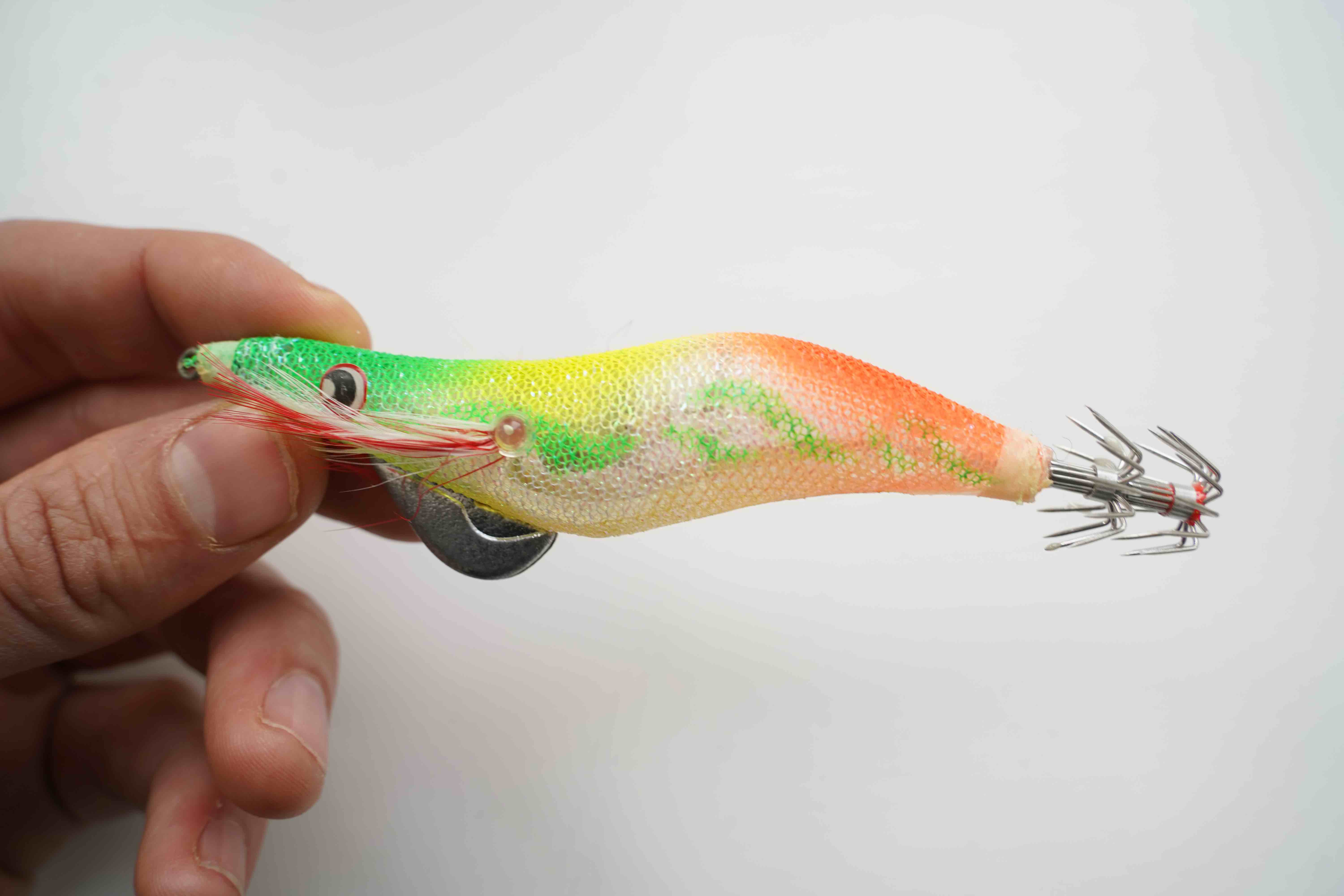
#4 Best squid jigs
Squid are best targeted with squid jigs with the use of bright lights to draw them in. Size is probably more important than colour, with smaller squid being easier to catch on smaller lures. The rate at which the lure sinks is also a factor. You will need squid jigs that can plumb the depths fast in deeper water. Otherwise, when you ‘jig’ your lure upwards, it will take too long to fall back down. Your jig ends up spending less time in what Americans call the ‘strike zone’. With the right lures, they are easy to catch when they’re there. Catching them is primarily a location and timing challenge.
#3 The UK squid fishing season runs from August to January
The best months for squid fishing in the UK are October and November. However, you can catch them at the tail end of summer. The fish get bigger as you get deeper into winter. They come inshore in the winter months to hunt and breed.
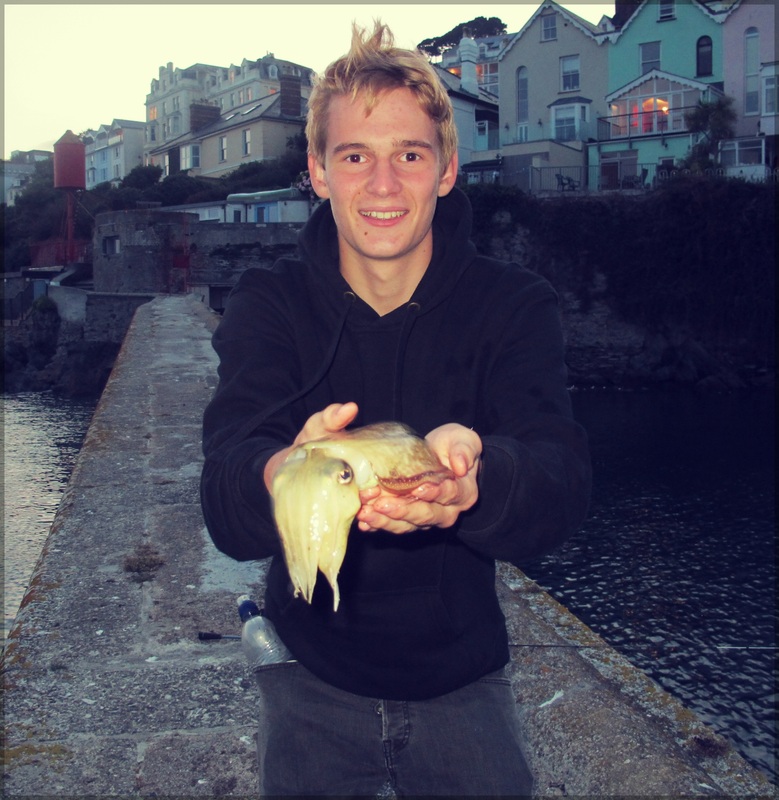
The suction power of a single tentacle is so strong that a few suckers at the end of one limb can support the entire body weight of a squid out of water. Essentially, a squid can dangle from your finger with one leg. This means that removing them from you is not easy, even if you wish to do so. In water, escaping a giant squid, if it desired you, would be impossible.

#2 One squid means many squid
The ‘squads’ squid move in hunt collaboratively, relying heavily on their excellent vision. This is one of the signs that these cephalopods are more intelligent than fish species (although cuttlefish can hunt collaboratively with fish, too). There’s no wonder all the fish leave when a squad of squid show up… They’ve got way too much brain, beak and tentacles for anyone’s liking.
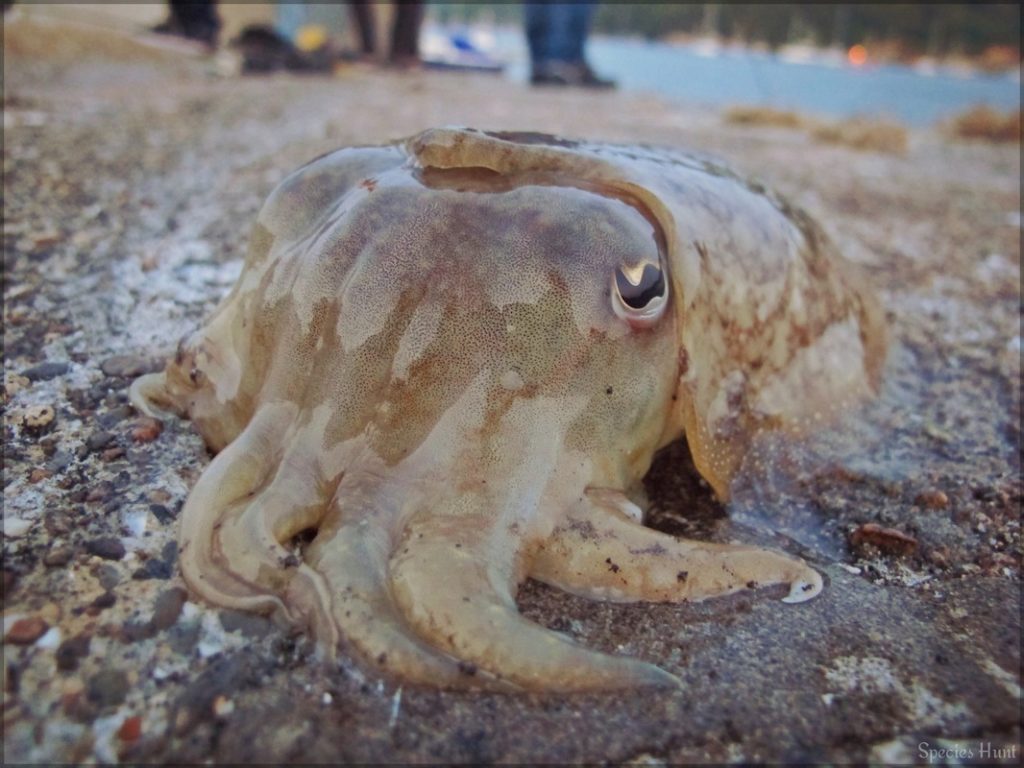
#1 The best place to catch squid is a well lit harbour wall or boat
Squid are best targeted by boat or from harbour walls at night time. It’s a great help if the area is lit up, as squid are attracted to the light and the huge squads of squid are often visible from the harbour wall, so you can cast right onto them. Cuttlefish like rough ground and will come well into the shallows to feed. They hover over kelp beds eerily, like UFO’s and strike lightning fast.
Catching Squid with Jigs from Shore & Boat
How to catch squid with squid jigs
- Find a harbour or pier near you with artificial lighting at night time and make a visit in the dead of a winter’s night.
Squid come inshore to feed on shrimp around harbour walls at night time in winter, and are attracted to lighting, perhaps because they rely heavily on vision for hunting.
- Use whatever rod and reel you have, a bass rod or light spinning outfit is best.
You need to use a rod that can cast squid jigs effectively, preferably without added weight. Your rod should cast under 2oz.
- Tie a squid jig to the end of your line.
Squid jigs have a squirt of spikes which are designed to grip the flesh of a squid and are the only effective lures for squid fishing.
- Cast out and let your lure sink. Use a sink and draw retrieve to maximise the amount of time your squid jig spends falling down the water column.
Squid hit lures OTD: on the drop as they fall down the water column. It’s like a reflect reaction, they see something falling, they act more impulsively to hit it.
- Wear old clothes because you’re about to get covered in ink.
A landing net is very helpful for squid fishing and will increase the number you land successfully.
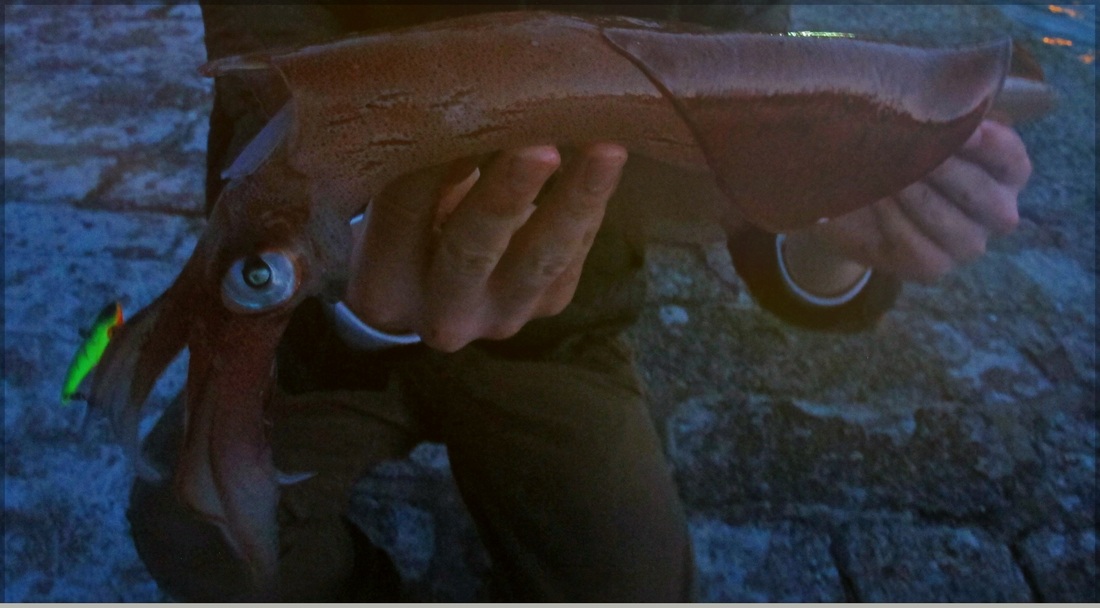
Surf fishing for big bass | Grant Woodgate
Surf fishing for big bass with Samson Lures | Masterclass with Grant Woodgate Few people…
The best braided fishing lines, ranked
The best braided fishing lines, ranked We look at the best braids, from the budget…
The best bass rods | Finding your next stick
The best bass rods | Finding your next stick The most common bass fishing setup…
The UK’s Best Bass Lures
The UK’s Best Bass Lures Let’s start by looking at the three bass lures that…
The Ideal Lure Fishing Set-Up
Lure fishing set ups, everything you need. In this article, I will recommend specific rods,…
Rock Fishing with Lures
Rock Fishing with Lures You’re sat, perching on a rock below a colony of cormorants….

